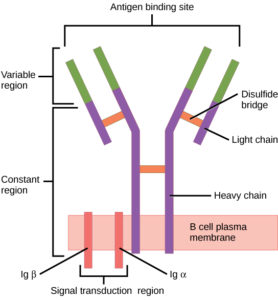This year, our bloggers wrote about a range of topics, including semaglutide, a 20,000-year-old pendant, and type 1 diabetes. Each topic is unique and has proven its popularity by our Promega Connections readers! Take a look at our top three most-viewed blog posts of 2023.
Continue reading “Promega’s Top Three Most-Viewed Blog Posts of 2023”type 1 diabetes
COVID-19 and Type 1 Diabetes: Exploring the Potential Link
Prior to the COVID-19 pandemic, the incidence of adolescent type 1 diabetes was steadily increasing at a rate of 1.9% per year in the United States and 3-4% per year in European countries (3,7). Since the pandemic, however, several studies have reported an unprecedented surge in type 1 diabetes in children and teenagers.
Continue reading “COVID-19 and Type 1 Diabetes: Exploring the Potential Link”Monoclonal Antibody (mAb) Therapy to Delay the Onset of Type 1 Diabetes
On November 18, 2022, the US Food and Drug Administration (FDA) announced the approval of the first drug to delay the onset of stage 3 type 1 diabetes (T1D). The monoclonal antibody (mAb) drug, teplizumab, was approved for use in adults and pediatric patients 8 years and older.

The road to approval has been a bumpy one for the manufacturer, Provention Bio. In 2020, the FDA rejected the application for teplizumab due to several concerns, including the small size of the clinical trial. With the current approval, based on new clinical trial results, Provention Bio confirmed a co-promotion agreement with Sanofi US. The agreement included a $35 million Sanofi equity investment in the company.
Continue reading “Monoclonal Antibody (mAb) Therapy to Delay the Onset of Type 1 Diabetes”B Cells, T Cells and Now X Cells?
The cause of type 1 diabetes (T1D) is not well understood. What is known is that in T1D, immune cells attack pancreatic islet cells that produce insulin. In addition, insulin is an autoantigen that activates T cells in diabetic persons.
A new discovery by Ahmed et al. could further T1D understanding. These findings are also setting B and T cell paradigms on their ear.
About B Cells and T Cells

B cells (B lymphocytes) are part of the cellular immune response. They act by means of surface receptor molecules that are immunoglobulins. These B cell receptors are created by highly variable gene rearrangements that result in a huge variety of these surface immunoglobulin molecules. The beauty of B cell receptors (BCR) lies in the fact that, through random gene rearrangements comes a such large variety of B cell surface receptors, that any foreign antigen that makes its way into the body is recognized and snagged by a B cell receptor.
B cells then internalize, process and present these antigens to T cells. Continue reading “B Cells, T Cells and Now X Cells?”
